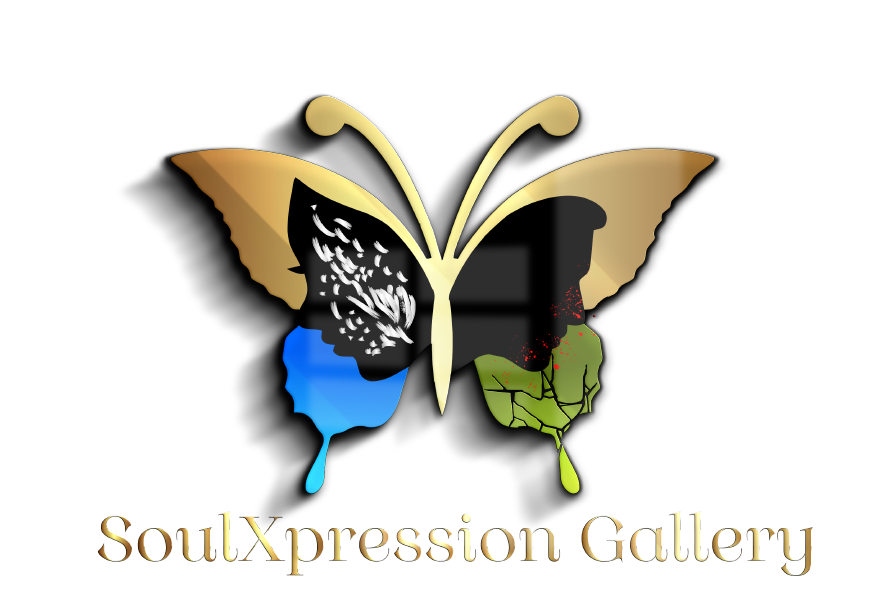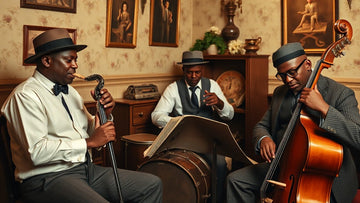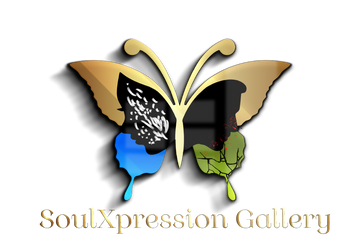Music has always had this amazing ability to heal our hearts, something people have known for thousands of years. Think about the story in the Bible where young David played his harp for King Saul to chase away the evil spirit that was tormenting him. That old story shows us something powerful - music can touch our soul and spirit in ways that bring peace or trouble, depending on what kind of music we're listening to.
We can't talk about healing music without mentioning genres like blues and jazz. These weren't just new sounds that people invented for fun. They were born from real pain, real struggle, and real hope. People who had almost nothing found a way to turn their heartache into something beautiful that could heal not just themselves, but everyone who heard it.
The Birth of Blues: When Pain Becomes Music
In the late 1800s in the Deep South, particularly around the Mississippi Delta, life was incredibly hard for African Americans. They'd survived slavery, but freedom didn't mean fairness. They faced crushing poverty, hatred, and a system designed to keep them down. Most people would have given up, but instead, they did something remarkable - they sang. The blues didn't start in fancy concert halls. It began in cotton fields, on front porches, and in small juke joints where people gathered after long, hard days. This wasn't entertainment - it was survival. When you're carrying pain that feels too heavy for words, sometimes the only way to let it out is through music.The blues gave people a way to say "I'm hurting, and that's okay." Songs like Robert Johnson's "Cross Road Blues" weren't just about standing at a crossroads - they were about those moments in life when you don't know which way to turn. When Bessie Smith sang "St. Louis Blues," she was speaking for everyone who'd ever felt homesick, heartbroken, or lost. We have "Slave to the Blues" by Ma Rainey, recorded in 1925, but reflects on the deep emotional impact of slavery. Early blues artists like Charley Patton (e.g., "Mississippi Boweavil Blues" which speaks to the struggles of sharecropping, a system that often mirrored aspects of slavery) and Bukka White (whose songs often depicted life on prison farms, which were essentially forced labor camps that replaced slavery). What made the blues so healing was its honesty. Nobody was pretending everything was fine. Instead, they were saying "Life is tough, but we're going to get through this together." And when people heard that, they felt less alone.
Jazz: Freedom in Music
While blues was being born, jazz was growing up in New Orleans around 1900. If blues was about expressing pain, jazz was about finding freedom through music. It was a time when African Americans had very few places where they could truly be themselves. Jazz clubs became those places - spaces where people could create, improvise, and be free, even if it was just for a few hours.Jazz had this magical quality of being unpredictable. When Louis Armstrong picked up his trumpet or Duke Ellington sat at the piano, nobody knew exactly what would happen next. That spontaneity was healing in itself. In a world that tried to control every aspect of their lives, jazz musicians found a way to be completely free through their music.The call-and-response style that jazz borrowed from church and work songs created something special - conversation through music. When the trumpet "talked" to the drums, and the drums "answered" back, it was like watching a community heal itself through sound.
How Music Healed Communities
Both blues and jazz did something incredible for their communities. They became medicine that worked on multiple levels:
Making Pain Valid: When people heard their struggles reflected in a song, it told them their feelings mattered. Whether it was B.B. King singing "The Thrill Is Gone" or Billie Holiday's haunting "Strange Fruit," these songs said, "Your pain is real, and you're not alone in feeling it."
Bringing People Together: Music venues became like community centers. People came not just to listen, but to connect with others who understood their struggles. The music created bonds between strangers and strengthened existing friendships.
Keeping Culture Alive: Through their songs, musicians passed down stories, wisdom, and hope to younger generations. They kept traditions alive while creating new ones.
Creating Hope: Successful musicians became proof that there was a way out of poverty and despair. They showed that talent and hard work could open doors, even in an unfair world.
How David's Harp Shows Us Music's Spiritual Side
The healing power of music goes deeper than just emotions - it touches our spirits too. Just like David's harp music could drive away the evil spirit troubling King Saul, music has this ability to affect the very core of who we are, just like earlier Blues and Jazz.This spiritual side of music is important to understand because it means music can help us or hurt us, depending on what we're listening to.
Blues and jazz, coming from honest human experience and often reaching toward something higher, tend to create positive spiritual environments that bring healing and peace. Here's how this spiritual healing works:
Sacred Expression: Many blues and jazz musicians treated their music like a form of prayer. Artists like Mahalia Jackson and Thomas Dorsey created music that invited God's presence and brought spiritual comfort.
Personal Connection: When people sing songs that relate to their own lives, they connect with something deeper than just entertainment. This personal connection brings validation and emotional release.
Spiritual Singing: Whether it's praising God through song or finding relief by singing about your struggles, using your voice creates a direct spiritual connection that can transform how you feel.
Real Vulnerability: The honest way blues and jazz artists expressed both pain and hope created spiritual authenticity that reached people's souls, just like David's sincere musical prayers reached King Saul's troubled heart.
Moments of Transcendence: Jazz improvisation often created spontaneous moments where musicians and listeners experienced something beyond the ordinary - a healing touch that reached the deepest parts of being human.
The Power of Singing: Your Voice as Medicine
Singing might be the most powerful healing tool we all have access to. When you sing, you're not just making sound - you're using your whole body to express what's in your heart. Your breath, your voice, your emotions all work together to create healing.Think about how good it feels to sing along to a song that perfectly captures how you're feeling. Whether you're singing a song that deeply resonates with your inner self, or lifting your voice in praise to God, you're participating in your own healing process.
Singing works in beautiful ways:
Personal Expression: When you sing songs that mirror your life story, you're giving voice to your experiences. It's like having a conversation with yourself that helps you process what you're going through.
Spiritual Connection: Singing praise creates a direct line between you and God. It lifts your spirit and can transform despair into hope, fear into faith.
Physical Release: The act of singing - breathing deeply, opening your chest, using your voice - actually helps your body release tension and stress.
Community Building: When people sing together, whether in church, at concerts, or just around the house, they create bonds that go beyond words.
What Makes Music Truly Healing
Healing music - what some people call curative music - does more than just sound good. It actually helps our emotions, our minds, our spirits, and sometimes even our bodies feel better. Scientists have proven what blues and jazz musicians always knew: certain kinds of music can change how we feel and help us heal.But here's something important to remember - music's power can work both ways. Just like David's anointed music could drive away evil influences, music created with bad intentions or containing harmful spiritual elements can potentially hurt our souls.
Music heals us through several ways:
Spiritual Connection: Like David's harp that could change spiritual atmospheres, healing music creates positive spiritual environments that can touch the deepest parts of our souls, bringing peace where there was trouble.
Brain Response: Music lights up multiple parts of our brains at once, including areas that handle emotions, memories, and rewards.
Emotional Release: Both blues and jazz as well as Psalms of David among others genres give us frameworks for expressing difficult feelings. Blues offered a safe space for grief and sadness, while jazz's improvisation allows for creative expression of complex emotions.
Voice as Therapy: Singing engages your whole body - breath, voice, and emotion - creating complete healing. When blues singers like Mahalia Jackson raised their voices in praise or when Billie Holiday sang about her personal struggles, they showed how vocal expression can provide deep emotional and spiritual relief.
When Words and Music Come Together
While melody and rhythm provide the emotional foundation, well-written lyrics make music's healing impact even stronger by giving specific words to universal experiences. When meaningful words combine with powerful melodies, they create a healing tool that can reach deep into people's souls.
Take Nina Simone's "Feeling Good" - the lyrics talk about being reborn and starting fresh while the music builds from quiet reflection to powerful declaration. This combination helps listeners work through their own transformation journeys.
John Coltrane's "A Love Supreme" - a musical prayer that has comforted and inspired countless listeners facing spiritual struggles.
Sam Cooke's "A Change Is Gonna Come" shows how meaningful lyrics combined with soulful melody can provide hope during dark times. The song's journey from despair to determination mirrors many listeners' emotional paths. Other examples of lyrically powerful healing music include:
-
- Ray Charles' "Georgia on My Mind" - expressing longing and connection to home
- Etta James' "At Last" - celebrating love and fulfillment after struggle
- Johnny Cash's "Hurt" - facing pain and seeking redemption
- Aretha Franklin's "Respect" - demanding dignity and self-worth
Music Therapy Today
Today, professional music therapists use the same understanding about music's healing power that blues and jazz pioneers developed. Hospitals use healing music to help patients deal with pain, anxiety, and depression. Mental health professionals include musical elements in treatment plans, recognizing that rhythm, melody, and meaningful lyrics can reach emotions that regular talk therapy might miss.The improvisation aspects of jazz have influenced therapy approaches that encourage creative expression as a path to healing. Meanwhile, the blues tradition of transforming pain into art continues to inspire people dealing with trauma, loss, and hardship.
The Lasting Gift of Musical Healing
The birth of blues and jazz represents more than just new music - it marks the creation of powerful healing traditions that continue to help people today. These genres proved that music could work like medicine, offering emotional release, community connection, and hope when life gets tough.When Robert Johnson sang the blues at that crossroads, or when Louis Armstrong's trumpet soared through the night air in New Orleans, they weren't just making music - they were practicing a form of therapy that would heal countless souls for generations to come. Their gift reminds us that sometimes the most powerful healing doesn't come from avoiding pain, but from transforming it into something beautiful that can touch and heal others.The healing power of blues and jazz continues to speak to us today, offering timeless lessons about music's ability to heal, connect, and transform human experience. In recognizing and honoring this tradition, we see music not just as entertainment, but as one of humanity's most powerful healing tools.






